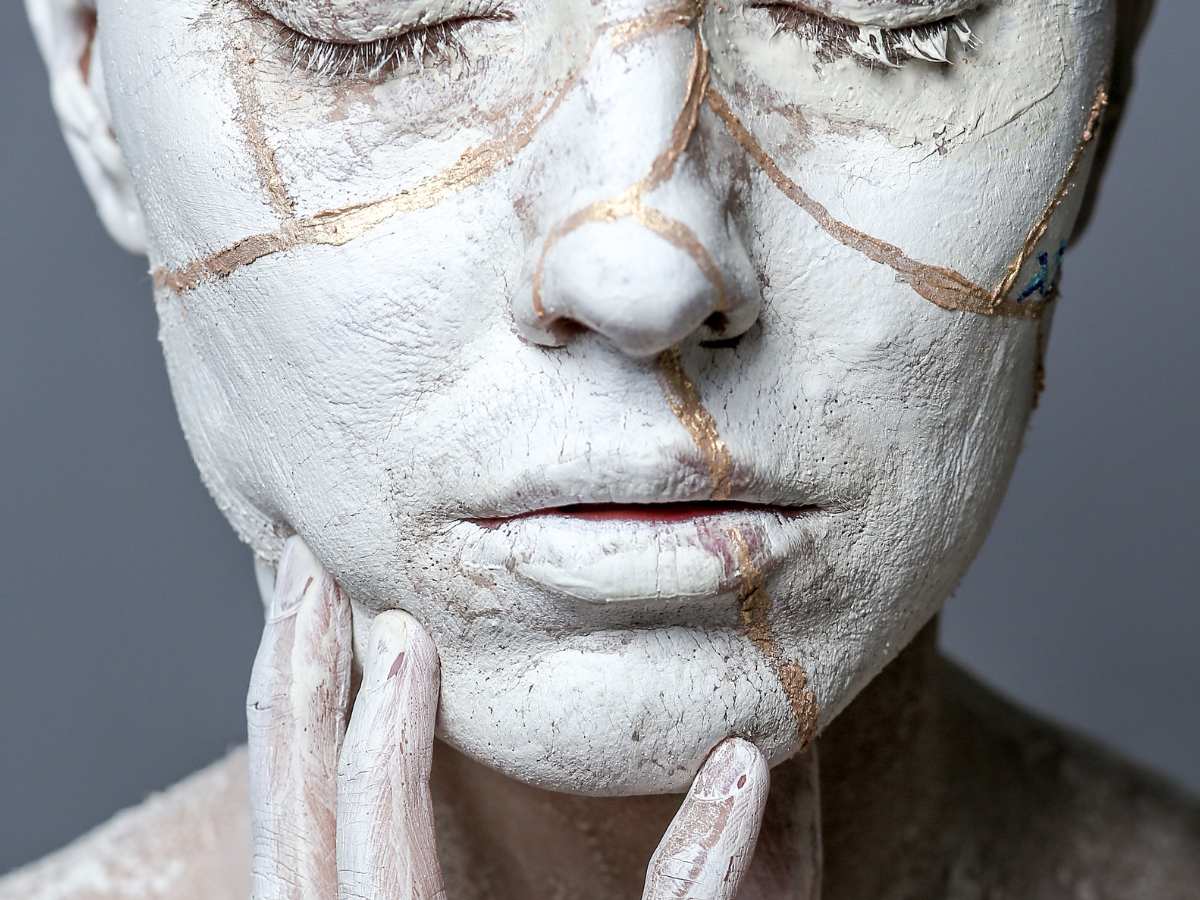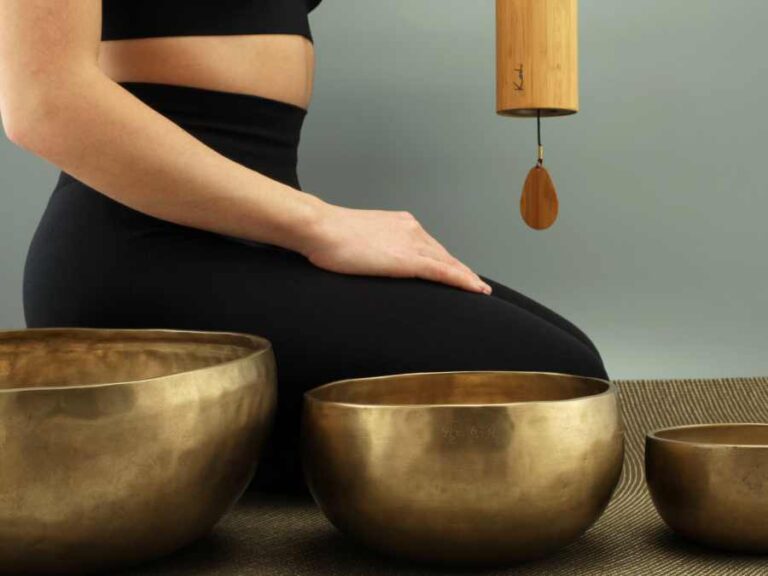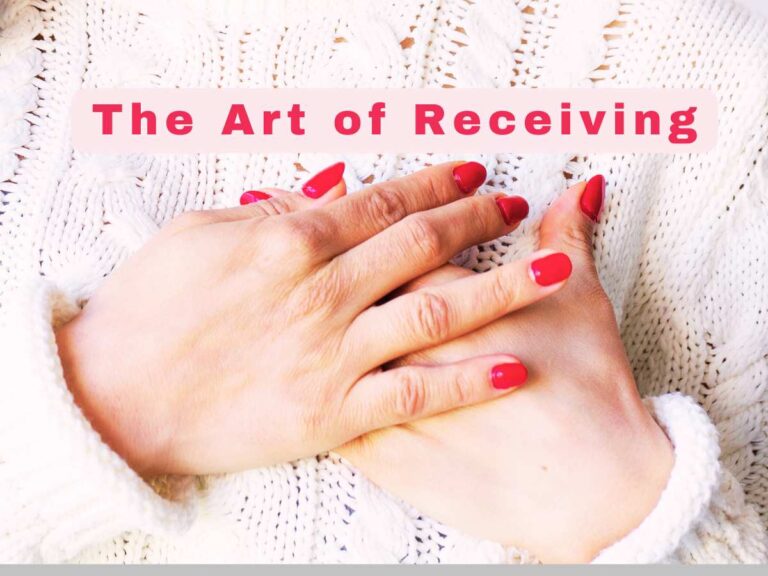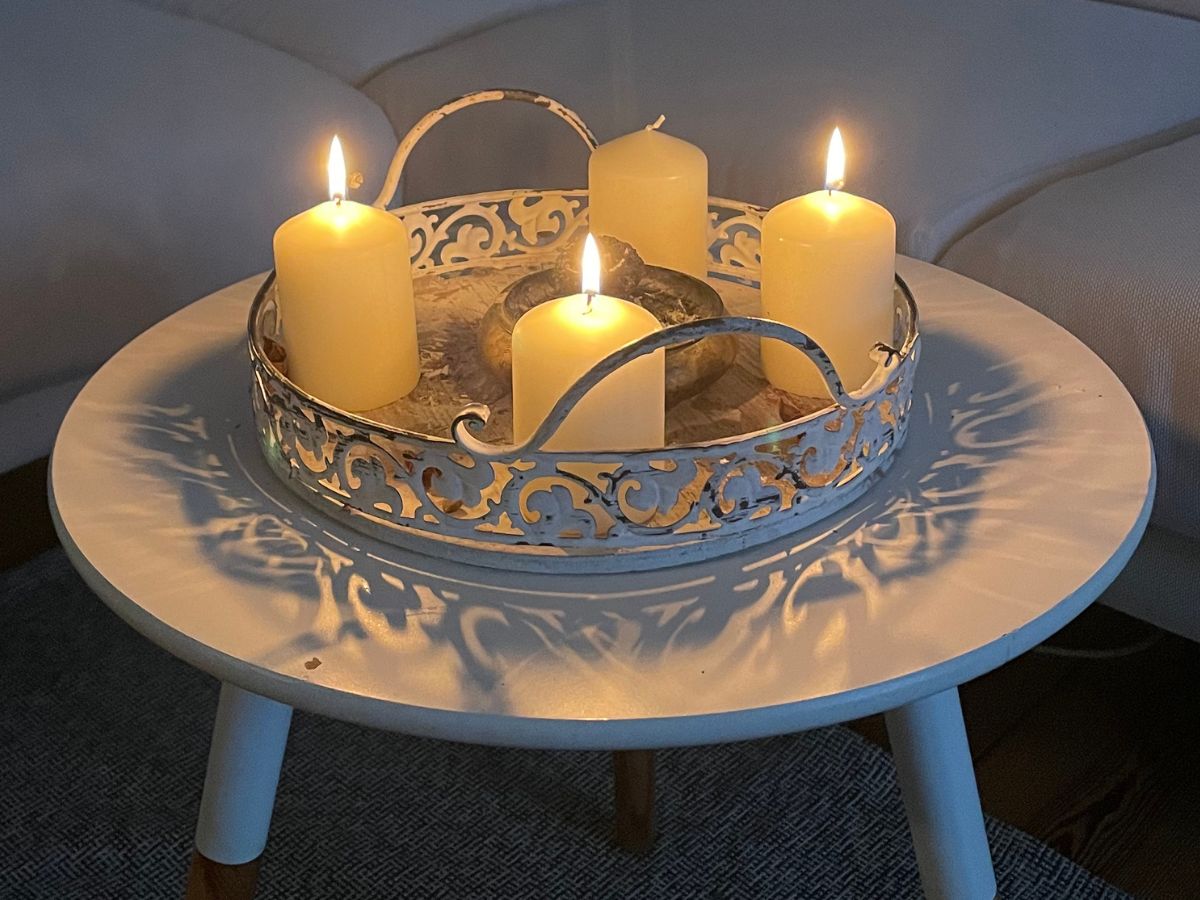What is Kintsugi?
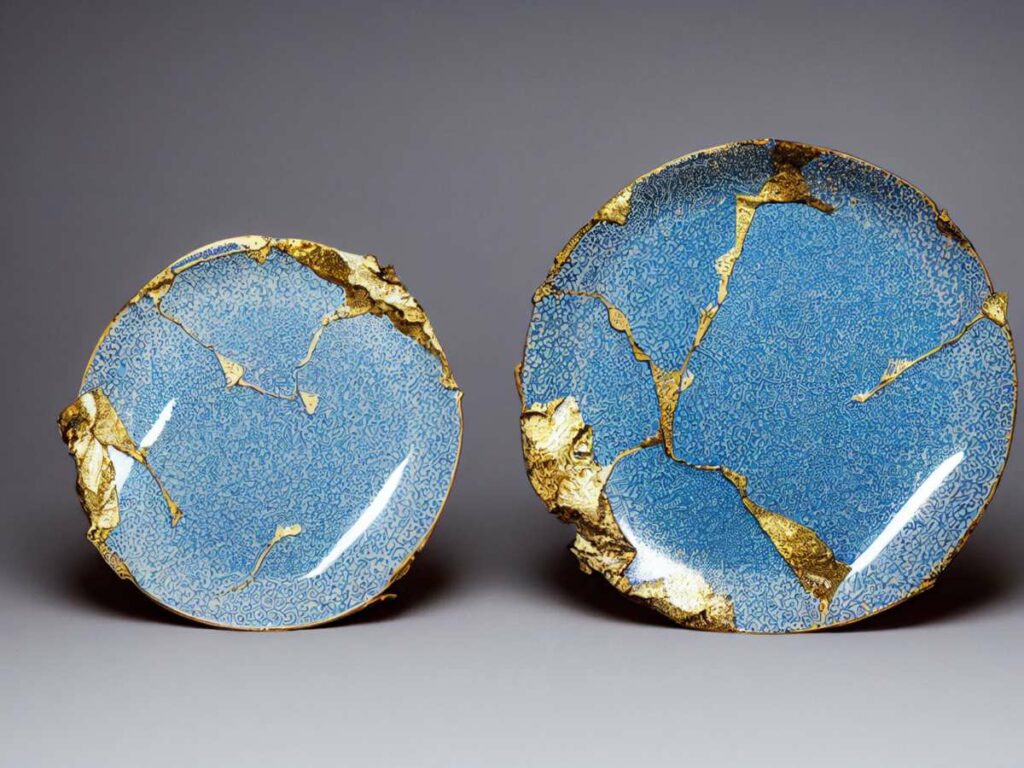
In a serene workshop, nestled in the heart of Japan, a master craftsman gently handles a broken ceramic bowl. Shards of porcelain, each a fragment of its former glory, lie before him. To the untrained eye, these pieces may seem like mere remnants of a beautiful object, now lost. But to the artisan, they represent the potential for rebirth, a canvas upon which a new story will be written.
This is the world of kintsugi, the ancient Japanese art of repairing broken pottery with lacquer mixed with powdered gold, silver, or platinum. Through this process, the broken object is not only restored but transformed into something even more exquisite than before.
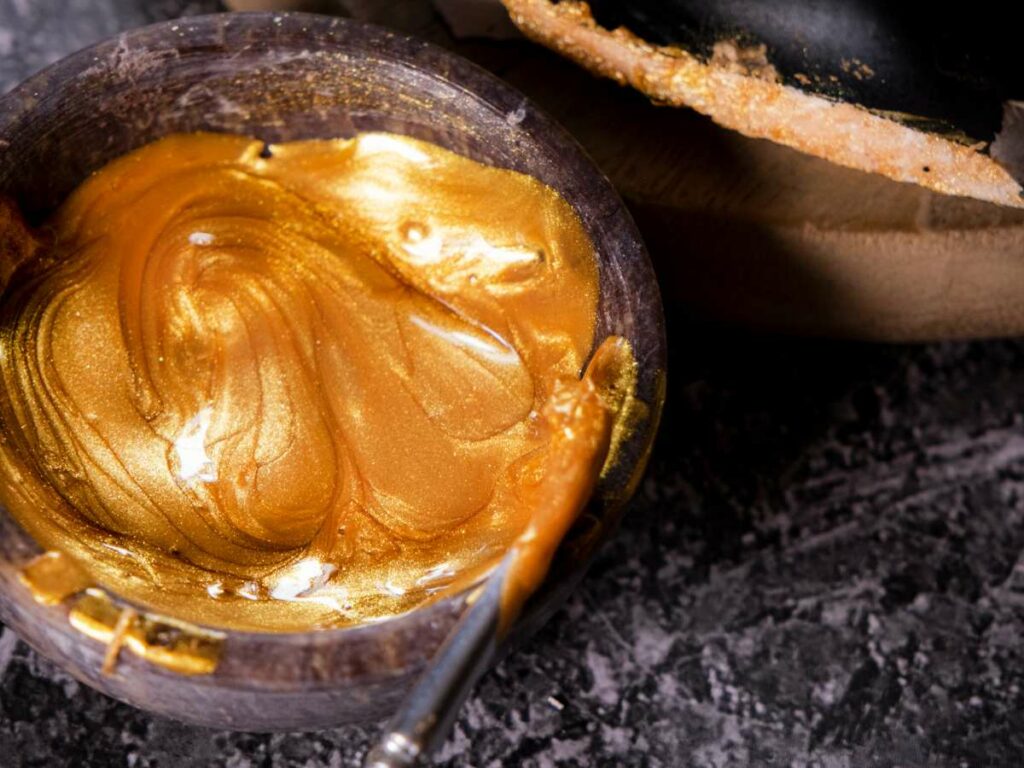
Kintsugi, which translates to “golden joinery,” is much more than a method of repair. It is a philosophy, a way of life that celebrates the beauty of imperfection and the resilience of the human spirit. This art form teaches us that our scars, whether physical or emotional, do not signify brokenness. Instead, they are marks of our journey, badges of honor that reflect our ability to heal and grow.
The Beauty of Imperfection
The philosophy behind kintsugi is deeply rooted in the Japanese aesthetic of wabi-sabi, which finds beauty in imperfection, impermanence, and incompleteness. In a culture that often values the new and the flawless, kintsugi offers a refreshing perspective. It tells us that brokenness is not something to hide or be ashamed of, but rather something to embrace and highlight.
When the craftsman painstakingly applies the lacquer and gold dust to the fractured ceramic, he is not trying to hide the damage. Instead, he accentuates the cracks, making them the focal point of the piece. The result is a work of art that is more beautiful and unique precisely because of its history and the journey it has undergone.
Healing Through Kintsugi
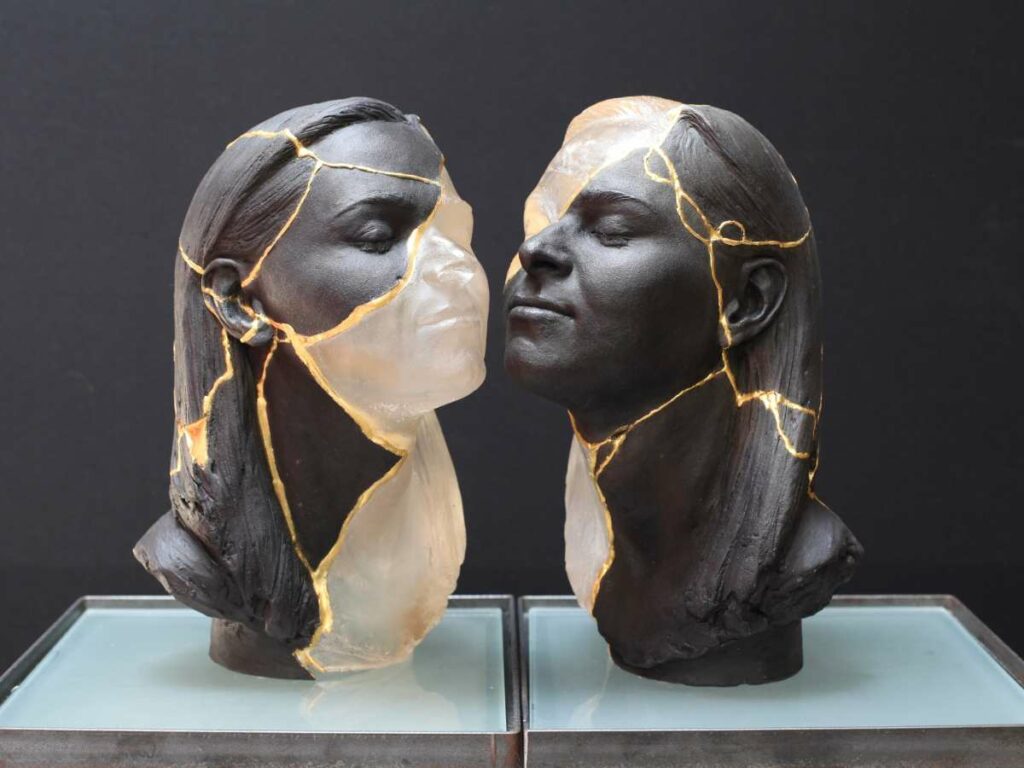
Just as a broken bowl can be mended and made beautiful again, so too can our own wounds be healed. The process of kintsugi serves as a powerful metaphor for personal healing. Life, with all its trials and tribulations, often leaves us feeling shattered. But like the broken pottery, we have the potential to come together again, stronger and more beautiful for having been broken.
Healing is not about erasing our scars but about integrating them into our lives in a way that adds depth and richness to our existence. It is about acknowledging our pain, accepting it, and then using it to create something new. This is the essence of kintsugi. Each golden seam represents a story of pain and recovery, of loss and renewal.
Embracing Our Scars
In the practice of kintsugi, there is no attempt to disguise the damage. The cracks are not seen as flaws but as part of the object’s history. Similarly, our own scars—whether they are emotional wounds from past experiences or physical marks from surgeries or accidents—are a testament to our resilience. They tell the story of where we have been and what we have overcome.
When we embrace our scars and integrate them into our self-image, we can begin to see them not as blemishes but as features that make us unique. This shift in perspective allows us to move from a place of self-pity or shame to a place of empowerment and self-acceptance.
The Journey of Transformation
The process of kintsugi is meticulous and time-consuming. Each piece of the broken object must be carefully cleaned and prepared before it can be reassembled. The lacquer must be applied with precision, and the gold dust must be carefully sprinkled to create the desired effect. This careful, deliberate process mirrors the journey of personal transformation.
Healing, like kintsugi, takes time. It requires patience, care, and attention. There are no shortcuts. We must be willing to sit with our pain, to explore it, and to understand it. Only then can we begin to integrate it into our lives in a way that allows us to move forward.
Creating Something Beautiful
The final stage of kintsugi is the most rewarding. As the craftsman finishes his work, he steps back to admire the transformed object. What was once broken and discarded is now a work of art, imbued with new life and meaning. The golden seams glint in the light, a testament to the beauty of imperfection and the power of healing.
In our own lives, this stage represents the moment when we can look back on our journey and see how far we have come. Our scars, once sources of pain, have become sources of strength. We are not the same as we were before—we are more complex, more beautiful, and more resilient.
Final Thoughts
Kintsugi teaches us that there is beauty in brokenness. It reminds us that our scars are not something to hide but something to celebrate. Each crack, each seam of gold, tells a story of resilience, of healing, and of transformation. Through the lens of kintsugi, we can begin to see our own wounds in a new light. We can embrace our imperfections, integrate our experiences, and emerge stronger and more beautiful for having been broken.
As we navigate the challenges of life, let us remember the lessons of kintsugi. Let us celebrate our scars, honor our journey, and trust in our ability to heal. For it is through our brokenness that we find our true strength and beauty.
Connect with me:
- Website: https://shehealsher.com
- Instagram: @nadinekuehnholistic
- Facebook: @nadinekuehnholistic
- Pinterest: @nadinekuehnholistic
- TikTok: @she.heals.her
- LinkedIn: https://www.linkedin.com/in/nadinekuehn/
- Youtube: https://www.youtube.com/@NadineKuehn
Listen to my other Podcast Natural Woman Alchemy:
Intro and Outro Music by my dear mentor and friend Kara Johnstad

